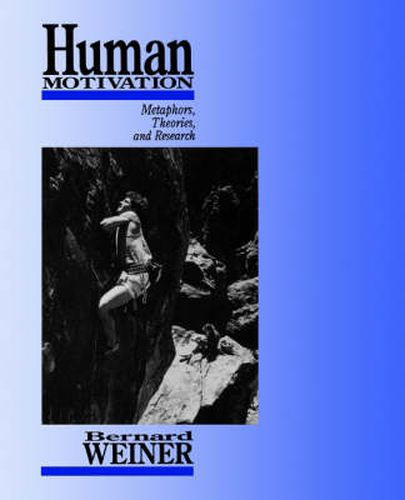Readings Newsletter
Become a Readings Member to make your shopping experience even easier.
Sign in or sign up for free!
You’re not far away from qualifying for FREE standard shipping within Australia
You’ve qualified for FREE standard shipping within Australia
The cart is loading…






‘Weiner’s third textbook on motivation has more emphasis on emotion than its predecessors. There is also a new organization around basic metaphors…there is particularly good and up-to-date coverage of attributional approaches’ - Cognition and Emotion Successful with over 24,000 students in two earlier motivation books, Weiner’s text - newly available in paperback - depicts motivation as an unfolding story with plot and characters. He offers insights into the history and study of motivation and captures the excitement of the field as it evolves. Theories are explored in the context of the dominant metaphor, or paradigm, of various eras. First to be discussed is the machine metaphor, which took a mechanistic view of human motivation and gave rise to Freudian, Hullian and Gestalt theories. Then Weiner discusses why this paradigm was abandoned in favour of another, which led to Expectancy-Value and Attribution theories. The rise of a further paradigm, which sees humans as evaluating judges, is then examined. The author concludes with a comparison of the theories reviewed.
$9.00 standard shipping within Australia
FREE standard shipping within Australia for orders over $100.00
Express & International shipping calculated at checkout
‘Weiner’s third textbook on motivation has more emphasis on emotion than its predecessors. There is also a new organization around basic metaphors…there is particularly good and up-to-date coverage of attributional approaches’ - Cognition and Emotion Successful with over 24,000 students in two earlier motivation books, Weiner’s text - newly available in paperback - depicts motivation as an unfolding story with plot and characters. He offers insights into the history and study of motivation and captures the excitement of the field as it evolves. Theories are explored in the context of the dominant metaphor, or paradigm, of various eras. First to be discussed is the machine metaphor, which took a mechanistic view of human motivation and gave rise to Freudian, Hullian and Gestalt theories. Then Weiner discusses why this paradigm was abandoned in favour of another, which led to Expectancy-Value and Attribution theories. The rise of a further paradigm, which sees humans as evaluating judges, is then examined. The author concludes with a comparison of the theories reviewed.